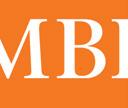





















 Mathematics
Learner’s Book 2C
Mathematics
Learner’s Book 2C
This Learner’s Book provides activities to support the third term of Mathematics for Cambridge Early Years 2.
Activities can be used at school or at home. Children will need support from an adult. Additional guidance about activities can be found in the For practitioners boxes.
Children will encounter the following characters within this book. You could ask children to point to the characters when they see them on the pages, and say their names.
The Learner’s Book activities support the Teaching Resource activities. The Teaching Resource provides step-by-step coverage of the Cambridge Early Years curriculum and guidance on how the Learner’s Book activities develop the curriculum learning statements.

Hi, my name is Kiho.
Hi, my name is Rafi.
Hi, my name is Mia.
Find us on the front covers doing lots of fun activities.

Hi, my name is Gemi.


Find and tick.
Draw the missing objects in the correct party bag.
1
2




For each bag, tick each object in the table. If there is no tick, that object is missing.

Elephant
Lollipop
Smiley face sticker
Dinosaur
Sweet Pencil
Encourage children by asking questions such as Have all the party bags got a ball? They are all ticked in the table. What shall we check next? Invite children to draw another party bag – will it have one or more objects missing?
Share the apples equally Draw.
Share 8 apples.


Share 8 apples.




What happens when there are more children?













Give children objects (such as counters and small world people) so they can try the activity practically first. Challenge children to fairly share other amounts between 2 or 4 people, including an odd number of objects.
Tick ✔ the shapes that are divided into halves. Cross ✘ the shapes that are not divided into halves.









Finding half means dividing the shape into two equal parts. Each part is a half.




Invite children to look at each shape and decide if it is divided into halves. Ask How do you know? Challenge children to draw fun shapes that are divided into halves and not halves.